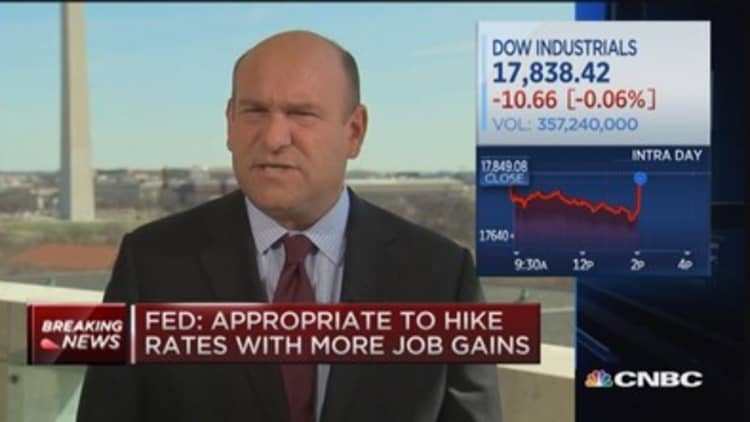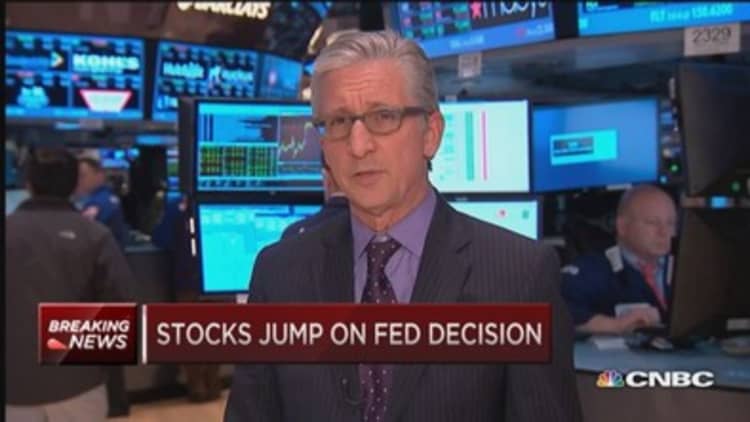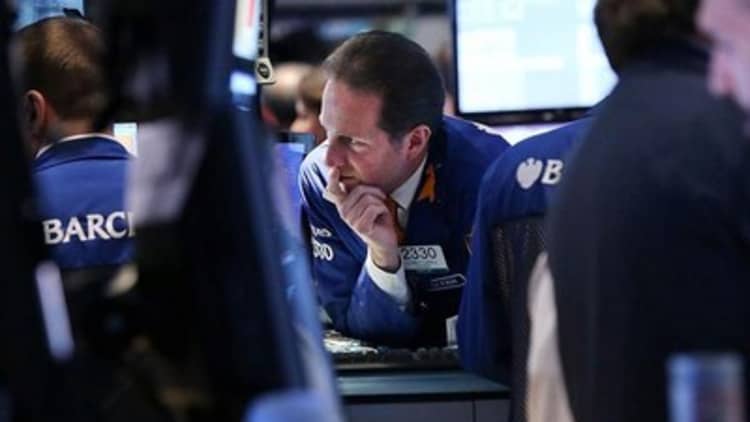


The Federal Reserve fired its first warning shot Wednesday that it is going to start hiking interest rates–sometime.
As the global investment community focused its attention on the U.S. central bank, the Fed Open Market Committee lived up to expectations: It dropped the word "patient" from its post-meeting statement, an indication, subtle though it may be, that the era of zero interest rates is about to end.
But the mostly dovish statement made little fanfare over eliminating the word, and in fact stated specifically that "an increase in the target range for the federal funds rate remains unlikely at the April FOMC meeting," a phrase missing from previous communiques.
"Just because we removed the word 'patient' does not mean we will become impatient," Fed Chair Janet Yellen said at a post-meeting news conference.
"The Committee anticipates that it will be appropriate to raise the target range for the federal funds rate when it has seen further improvement in the labor market and is reasonably confident that inflation will move back to its 2 percent objective over the medium term," the statement said.
Stocks quick turned positive, with the Dow up 100 points 5 minutes after the statement was issued. Yields on US 10-year Treasurys fell below 2 percent for the first time since Feb. 25. The dollar weakened.
More Fed Coverage:
Read MoreUS rate storm brews, get ready for a 'tantrum'
Read MoreThe Fed: CNBC Explains
Read MoreIf it's not patient, what is the Fed anyway?
Read MoreGrant: Fed won't remove 'patient'
"What's important about this part of the statement is that it clearly says the FOMC is looking for 'further' improvement ,meaning the economy and labor market has not yet met whatever criteria necessary to warrant a rate hike," Dan Greenhaus, chief strategist at BTIG, said in a note. "We remain of the belief the Fed will first raise rates in September and view this statement, and the projection changes, and reducing the odds of a June hike."
"Patient" or not in the words of the closely watched statement, the Fed seems in no hurry to tighten.
Indeed, expectations for the pace of future hikes changed considerably. The so-called dot plot, which maps members' expectations of rates over the next several years, shifted lower to indicate a slower trajectory of tightening than originally anticipated.
"They went a little further … than most of us thought, particularly on the labor point," said Bob Doll, chief equity strategist at Nuveen Asset Management. "This is a dovish set of comments relative to expectations."
Median expectations for the future fell by a half percentage point for both 2015 and 2017, and 0.625 percentage points for 2016 and 2017. The respective median for the three years now is 0.625 percent, 1.875 percent and 3.125 percent.
Those moves came as FOMC members adjusted their projections lower for economic growth and inflation.
The FOMC had anchored to the lower bound in the depths of the financial crisis and stayed there, despite steadily improving economic data, a sliding unemployment rate and worries in some corners of the financial markets that all the policy accommodation ultimately would come to a bad end.
In place of its "patient" stance, the committee outlined some broad measuring sticks it would use to determine the future path. In the aggregate, the Fed said future moves would be data dependent, a stance that does not commit it to a set structure for how it will raise rates. In addition to inflation and employment measures, the Fed also said it is watching "financial and international developments."
Markets had been volatile ahead of the decision and the data have been, too. FOMC decision days are usually positive for the stock market, with an average S&P 500 gain of 0.44 percent since the zero interest policy was implemented in late 2008, according to Bespoke Investment Group.
Economists across the board have been reducing their forecasts for first-quarter gross domestic product growth. The Atlanta Fed's GDPNow tracker puts growth at just 0.3 percent, a reading that, if close to accurate, would make it difficult for 2015 to live up to 3 percent or better expectations.
The FOMC's internal estimates reflected the trend. The statement confirmed that "economic growth has moderated somewhat," citing a "slow" housing market and "weakened" export growth, and even noted that employment measures need to improve before the Fed turns more hawkish.
Full-year 2015 GDP projections fell from a range of 2.6 percent to 3.0 percent in December to 2.3 percent to 2.7 percent from this week's meeting.
Core inflation (excluding food and energy prices) dropped from a 1.5 percent to 1.8 percent range to 1.3 percent to 1.4 percent. Headline inflation expectations declined from a 1.0 percent to 1.6 percent range to 0.6 percent to 0.8 percent.
Expectations fell similarly for 2016 and 2017.
Projections for employment actually were more aggressive, with estimates for this year falling from the 5.2 percent to 5.3 percent range in December down to 5.0 percent to 5.2 percent. FOMC members see unemployment perhaps falling below 5 percent in 2016, then settling into a longer-term range of 5.0 percent to 5.5 percent, which was a decline from December's estimate of a 5.2 percent to 5.5 percent range.
Economic projections also reflected an FOMC prepared to hike rates this year. Of the 17 members, including those who do not vote, 15 said 2015 is the right year to being tightening policy, while just two supported waiting until 2016.
The policy statement was adopted with no dissenting votes.
—CNBC.com's Michelle Fox contributed to this report.


